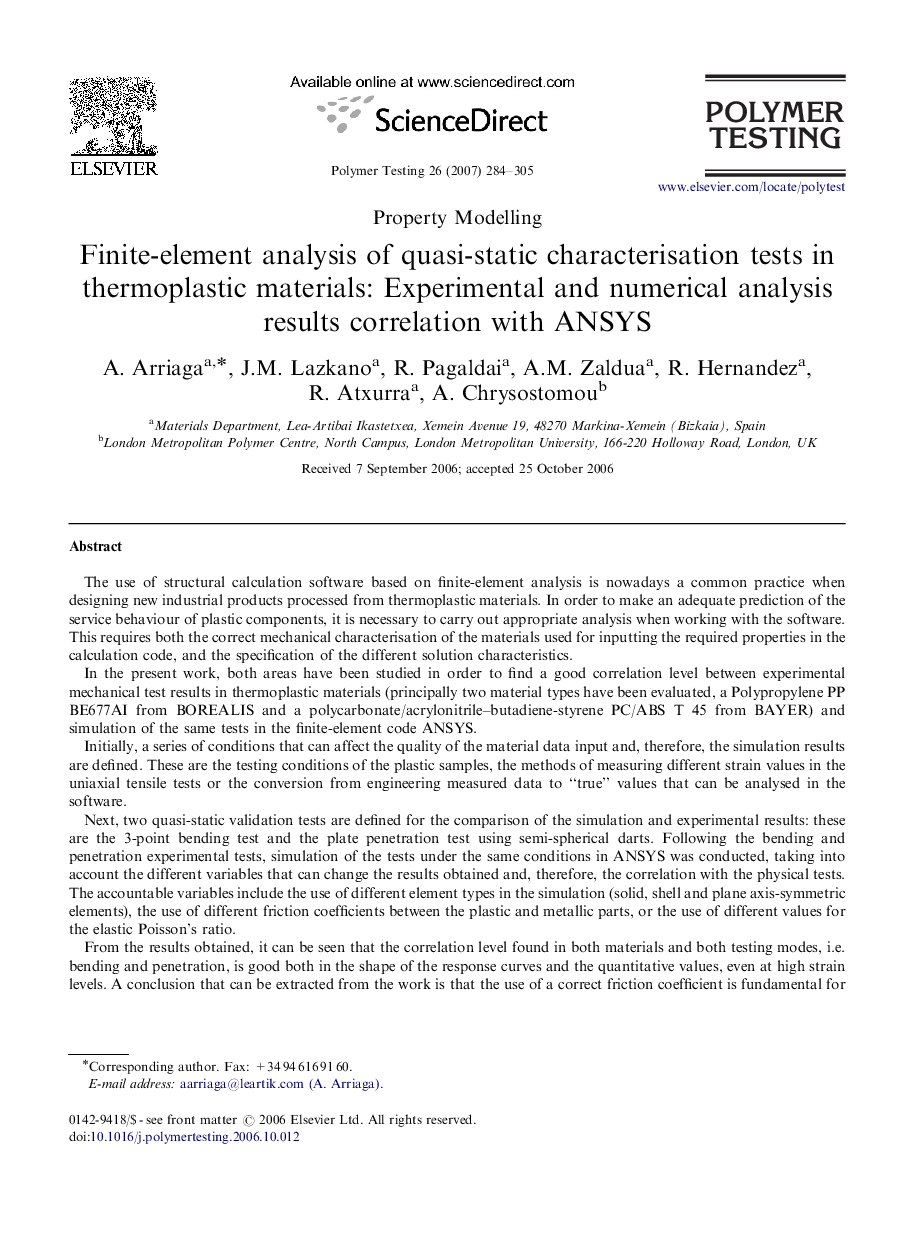| Article ID | Journal | Published Year | Pages | File Type |
|---|---|---|---|---|
| 5207768 | Polymer Testing | 2007 | 22 Pages |
Abstract
From the results obtained, it can be seen that the correlation level found in both materials and both testing modes, i.e. bending and penetration, is good both in the shape of the response curves and the quantitative values, even at high strain levels. A conclusion that can be extracted from the work is that the use of a correct friction coefficient is fundamental for good correlation between the experimental and simulation results. On the other hand, there are additional points to consider such as the use of different element types or the conversion of engineering values to “true” values where, for the tests described and the testing conditions used, no excessive differences are observed between one method and another.
Related Topics
Physical Sciences and Engineering
Chemistry
Organic Chemistry
Authors
A. Arriaga, J.M. Lazkano, R. Pagaldai, A.M. Zaldua, R. Hernandez, R. Atxurra, A. Chrysostomou,
